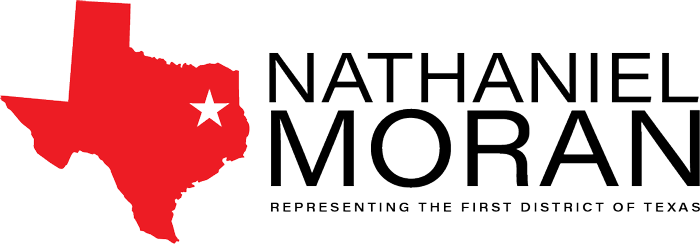Press Releases
House Passes Congressman Moran’s Rural Weather Monitoring Systems Act
Washington,
April 30, 2024
Washington, DC – Congressman Nathaniel Moran (TX-01) celebrated the passage of his legislation, the Rural Weather Monitoring Systems Act, which will require a study to review current weather monitoring systems in rural areas. “When it comes to inclement weather, every second counts. Across America, the best weather monitoring radars are naturally centered around metropolitan areas – leaving small towns and rural communities between radar coverage areas and ultimately blind to certain weather events. In East Texas, we are familiar with summer storms, but due to gaps in weather monitoring systems in rural areas, residents do not always have adequate time to prepare in the event of an emergency,” said Congressman Moran. “My legislation, the Rural Weather Monitoring Systems Act, requires a review of current weather monitoring systems in rural areas. This legislation will provide an expedited review of our current gaps and help the implementation of solutions in areas where coverage must currently be supplemented. For the safety and security of rural Americans, establishing access to accurate weather monitoring systems that have the ability to track life-threatening weather events makes all the difference between life and death. Identifying areas where weather radar can be improved is crucial for the safety of our communities in East Texas and protecting key economic sectors - including agriculture, aviation, water, and energy.” The Rural Weather Monitoring Systems Act passed the House of Representatives today as part of H.R. 6093, the Weather Act Reauthorization Act of 2023. Accurate weather forecasting in rural areas of the United States is a challenge due to technological limitations and the fact that weather forecasting is already a complex and data-intensive undertaking. Many radar locations are positioned near major metropolitan areas across the U.S., leaving rural areas with less robust real-time weather data. With the current technology’s end-of-life approaching, and amidst limited financial resources, rural areas are very unlikely to see any substantial, near-term improvement in local weather monitoring systems. In the First Congressional District, the two closest NEXRAD radars are in Shreveport and the DFW Metroplex, leaving many areas in East Texas without access to critical weather data from the lowest layers of the atmosphere. ### |


